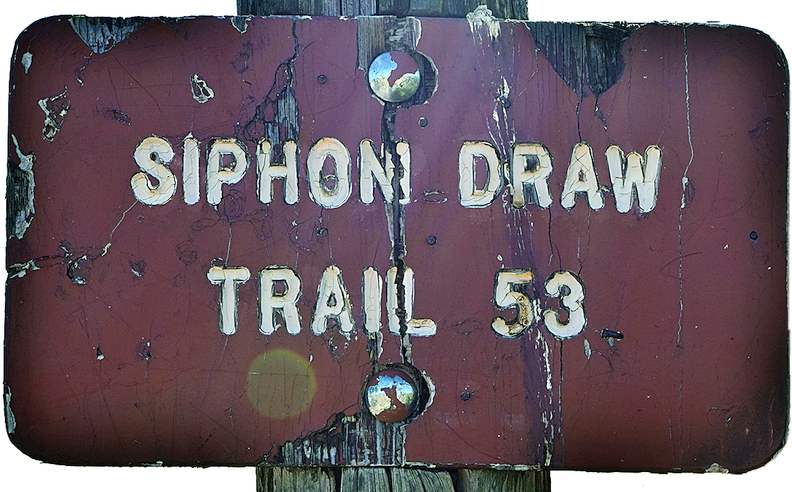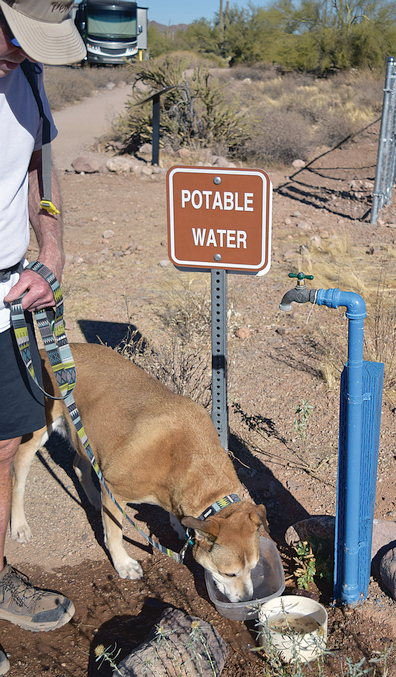Story and photos by Cheryl Hartz

Before the hot weather hits Arizona’s Sonoran Desert, check out Lost Dutchman State Park in the Tonto National Forest. Within the Superstition Mountains and Wilderness, this gem sits 40 miles east of the Phoenix metro area and just north of Apache Junction. After Winter Storm Nathaniel’s wet offerings in January, spring flowers could carpet the park in March.
The park, now totaling 320 acres, was developed in 1972 as a day-use area and designated a State Park in 1977. But travelers have come from all over the world seeking the fabled Lost Dutchman Gold Mine since the legend began in the 19th century.
The Superstitions were thus named by early white settlers because they considered Native American beliefs just that – superstition. The Apaches believed the Thunder God lived in the mountains, while the Pimas believe their ancestors are entombed there. It is sacred ground to many Native Americans.
The “Dutchman,” German immigrant Jacob Waltz, came to the area during the 1850s gold rush. The true story is unknown, but gold seekers have been looking for his alleged hidden cache since he supposedly escaped an attack by Apaches and narrowly escaped with his life, a few gold samples and some maps of the Superstition Mountains. Some $3 million worth of gold came out of the Superstition Mining District in the early 1900s, but the streak evidently played out. If anyone else ever found gold, they aren’t telling.

We weren’t looking for the Dutchman’s lost gold mine, probably because the scenery is spectacular and we just wanted a December campsite where it would be warm. And we definitely were glad we packed shorts and T-shirts.
Choose your level of exercise and expertise, starting with an easy hike on the Discovery or Native Plant trails, a moderate one like Treasure Loop or Prospector’s View, or an advanced one, including Siphon Draw or Flatiron trails. A 4-mile mountain bike loop trail is a recent addition. Take a map (provided with entrance fee) wherever you decide to go, because unmarked social trails crisscross the park. Motorized vehicles are not allowed, but horses are.

We packed a lunch and plenty of water to tackle the challenging Siphon Draw Trail. We knew we wouldn’t try for the top of Flatiron, because of the stress it would put on our 11-year-old dog, Jack. Well, let’s face it, rock scrambling straight up over unmarked territory during a nearly 6-mile roundtrip hike is a bit much for me, too. Siphon Draw, a well-marked 4-mile round trip, was plenty of exercise, with a lunch stop in the shade. It’s a popular trail, but not overcrowded. You won’t hit shade, basically, until you’ve ascended for awhile, and approach the draw, where we turned around.
We explored most of the lower trails during our weeklong campout. It was fun to see small water features for the birds and mammals, and a coyote-themed sundial. A dog park with a nearby water pump is a nice feature, as well.
Area wildlife includes desert mule deer, bobcats, coyotes (we heard them every night), jackrabbits, desert cottontails, hawks, quail, roadrunners and songbirds, javelina, Gila monsters, and of course, Arizona’s ever-present Diamondback rattlesnakes. Reptiles weren’t active in December, but might start to emerge in the spring, depending upon how warm it gets.
Park elevation is 2,000 feet. Moderate daytime temperatures occur from October to April, with extreme heat in the summer (over 100) and a winter average near 60 degrees.
Happy Spring Hiking!

